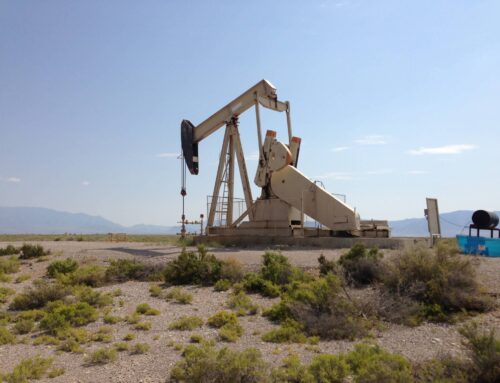Monday marks Earth Day, a worldwide event dedicated to celebrating our remarkable planet and ensuring its preservation for future generations. With a focus on environmental conservation and sustainability, Earth Day serves as a reminder of our changing climate. And as the impacts of climate change continue to hit closer and closer to home, we are all paying the price.
In response to rising average temperatures, shifting rainfall patterns, diminished ice coverage, and rising sea levels, taxpayers have shouldered an average annual cost of approximately $62 billion over the last five years dedicated to combating and mitigating the impacts of climate change. This represents a 35 percent increase compared to the previous five-year average. The U.S. experienced 28 billion-dollar weather disasters in 2023, breaking the previous record of 22 from just a couple years ago.
Luckily, there exist many opportunities for the federal government to refine our tracking of greenhouse gases (GHGs), reduce emissions, and sequester carbon, thereby saving federal dollars and protecting taxpayers from future long-term liabilities. The first step to solving any problem is understanding it. The government plays a pivotal role in tracking and understanding drivers of GHG emissions. Programs like the Greenhouse Gas Reporting Program (GHGRP) are essential, as they catalog emissions data from the largest greenhouse gas emitting facilities. Information like this can help inform policymakers’ efforts to ensure that the costs of emissions and their community impacts are borne by the responsible parties, not taxpayers. Recent efforts to improve GHGRP reporting include an EPA final rule that updates methodologies, including global warming potentials used to calculate who must submit data under the program, and another rule that would create more detailed reporting requirements for the oil and natural gas sector.
Better climate information leads to better climate action, which is exactly what a proposed rule from the Federal Acquisition Regulation (FAR) Council – which oversees federal government procurement policies and practices – seeks to accomplish. The proposed rule, entitled “Disclosure of Greenhouse Gas Emissions and Climate-Related Financial Risk,” would require large contractors to publicly disclose their emissions, report on climate-related financial risk, and set science-based emissions reductions targets to be eligible for certain government contracts. This will both enable better tracking of how firms receiving federal funding contribute to climate-related costs borne by taxpayers, and encourage companies to mitigate those climate-related costs by adopting plans to reduce emissions. And with about $700 billion in procurement spending annually, the federal government can incentivize emissions reductions with minimal additional spending.
There are also actions at the federal level to reduce emissions and raise revenue at the same time. In 2022, Congress established a per-ton fee for certain methane emissions above a set threshold from large oil and gas operators. As we wrote to the EPA in comments on the proposed rule, for too long lax policies have allowed operators to release methane into the atmosphere, wasting the resource, and passing the costs of emissions down to federal taxpayers through public health impacts, environmental pollution, and the escalating effects of climate change. Not only does the EPA estimate that the fee will reduce emissions by 1 billion metric tons over the next decade, but it will also generate $2.3 billion in revenue for taxpayers in that period. The Administration is also taking steps to reduce methane waste from oil and gas operators on federal and state lands.
Federal agriculture policy can also tackle GHG emissions by encouraging agriculture conservation practices that create and protect carbon sinks like wetlands. The Inflation Reduction Act recently directed $20 billion towards agriculture conversation that, if done right, can have a positive impact for producers and the climate. Other common sense policy reforms, like incorporating risk-reducing conservation practices into federal crop insurance premiums, could build long-term economic and climate resilience while also reducing emissions and saving taxpayer dollars.
However, policymakers must also be wary of policies that sound too good to be true and instead prioritize investments that can achieve meaningful emissions reduction. Capturing carbon from the emissions source and storing it underground sounds promising, but carbon capture and storage (CCS) technology and federal supports for it have been riddled by overspending and fraud and lack transparency and accountability in demonstrating true emissions reduction. The lucrative per-ton tax credit also offers a perverse incentive to emit and capture as much carbon as possible, instead of pursuing net emissions reduction. Any future spending on CCS subsidies must come with stringent safeguards to ensure taxpayer dollars are not being wasted on false climate solutions. Similarly, federal investments like the new sustainable aviation tax credit and other biofuel subsidies should ensure that federal spending actually decreases, not increases, GHG emissions, through provisions including but not limited to verifying full lifecycle GHG emissions are properly accounted for.
The taxpayer costs of climate change growing daily, and federal policies can improve our transparency and accounting of emissions. Smart solutions that build climate resilience and limit the drivers of our emissions can better protect taxpayers and our planet from costly liabilities. This Earth Day let’s remember that common sense solutions for the climate can create a better future for us all.











Get Social